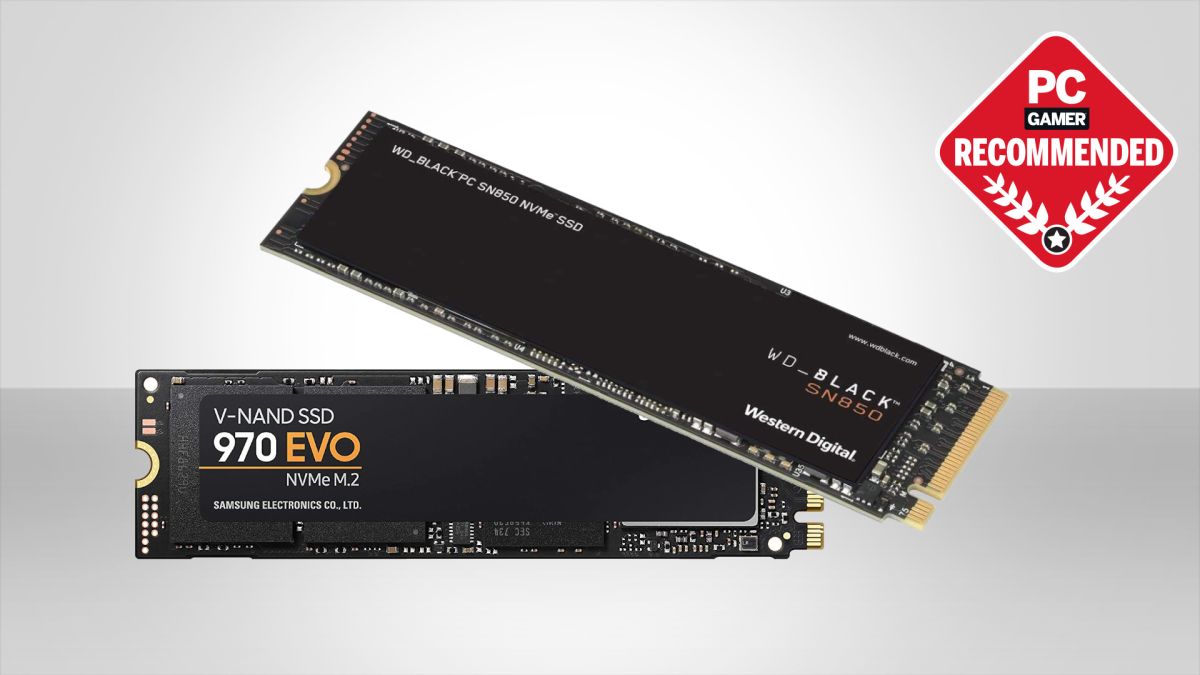[ad_1]
The best NVMe SSD speeds up your gaming PC. It might not seem like a big deal, but having a fast and reliable NVMe SSD makes everything easier, from booting your PC to loading massive open world games. NVMe SSDs make hard drives look like ancient tech. Outside of a new GPU, a NVMe SSD is the biggest upgrade you could add to your rig.
Even modern consoles are touting some of the best NVMe SSDs—both the Xbox Series X (opens in new tab) and PlayStation 5 (opens in new tab) boast speedy NVMe SSDs and you don’t want to get left behind by the consoles now, do you? The technology that makes the most of the Xbox’s storage (DirectStorage) will be finding its way onto our systems soon. What that means, is storage is about to get a lot more important for gaming PCs.
Thankfully, the SSD market is fierce right now, so great deals on quality SSDs are not uncommon. A speedy 1TB NVMe SSD might only set you back $120, which isn’t much more than you’d pay for a clunky old SATA SSD. As long as you have an M.2 slot on your motherboard, NVMe is the place to be.
We’ve tested loads of NVMe SSDs recently to find the very best options out there. Each drive we’ve looked at is available in a range of capacities with prices to match. And remember, larger drives perform better thanks to more controller channels being used at higher capacities, so buy a big a drive if you can. It’ll be worth it.
Best NVMe SSD
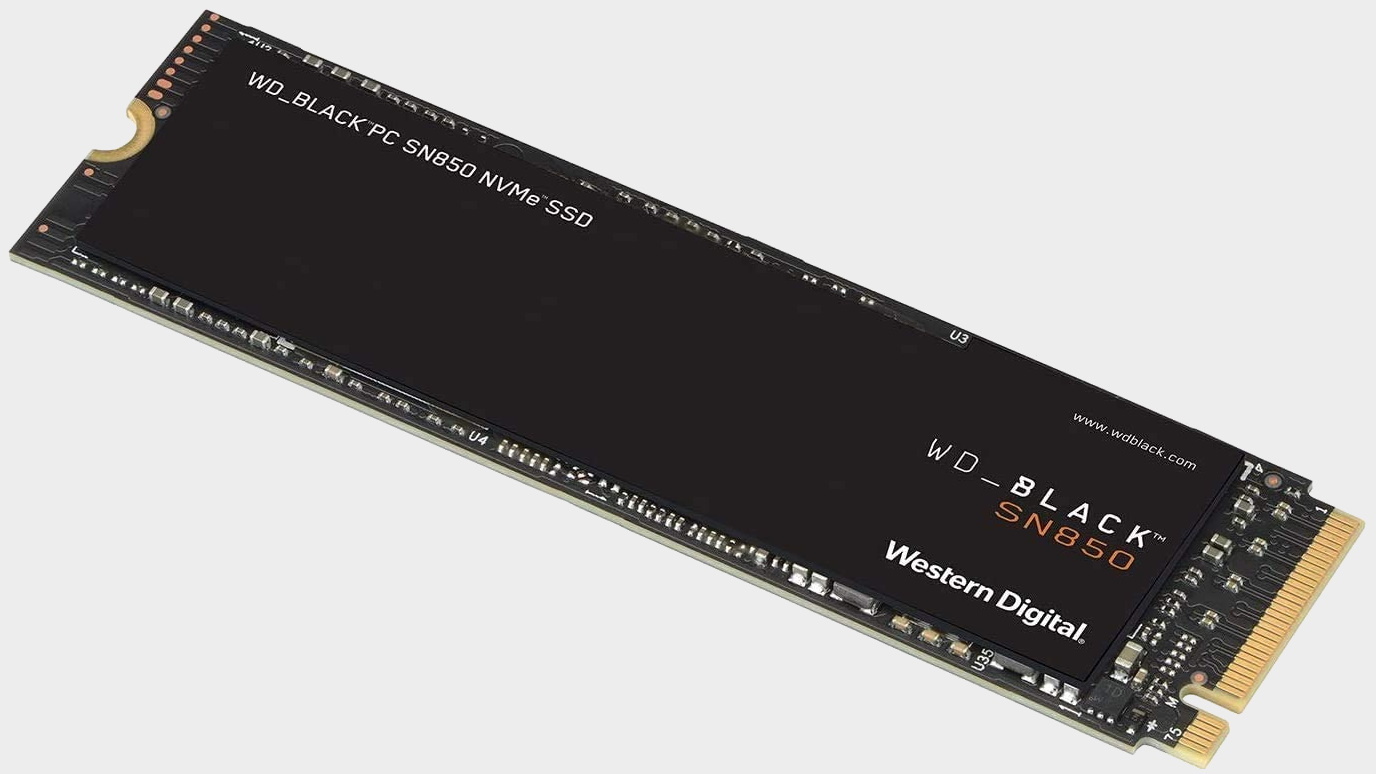
Our favorite WD Black SN850 config:
The WD Black SN850 1TB drive is the fastest PCIe 4.0 NVMe SSD you can buy right now. It may not top every test in every benchmark, but when it comes to real-world benchmarking, there’s nothing else that can touch it. Don’t get me wrong, it does well across the synthetic benchmarks, topping plenty of them, but there are a few places where the Sabrent Rocket 4 Plus or the Samsung 980 Pro have the edge, but overall that doesn’t take away from the fact that this is the pinnacle of storage right now.
Any SSD is ultimately defined by its performance and it’s here that the WD SN850 really stands out from the crowd. The synthetic benchmarks, spearheaded by ATTO and AS SSD, show that this is very much a second-generation PCIe 4.0 drive, with peak sequential read speeds knocking on 6,750MB/s and 5,920MB/s respectively. Writes are lower than the Sabrent Rocket 4 Plus, but still healthy, at either side of 5GB/s. The 4K write performance in AS SSD manage to flip this over as well, with the WD SN850 managing to outpace the Sabrent drive.
It’s the real-world performance tests that impress the most though, with PCMark 10’s Quick and Full storage tests putting the SN850 way ahead of the field. With an overall throughput of nearly 495MB/s in the Quick test and 550MB/s in the Full benchmark, this is a drive that just keeps powering on in day to day use.
The fact that this performance is echoed in the Final Fantasy XIV benchmark, which has the SN850 loading the five different scenes in a shade under seven seconds for the first time, impresses no end. When plenty of ‘fast’ SSDs still take 12 seconds to complete the same task, that proves what difference the latest technology can have on gaming performance.
The SN850 builds on Western Digital’s previous SSDs to stand head and shoulders above the others to be the performance drive you want in your gaming PC. The Samsung 980 Pro, which had the edge for a few months, is left out in the cold, especially as it costs the same as the SN850, but loses out to the newer drive in every metric (apart from operating temperatures). Neither is a bad drive, obviously, but if we had to recommend a next-gen SSD right now, there’s only one clear option, and that’s the WD SN850. It’s simply the best drive you can buy today.
Read our full Western Digital WD SN850 review (opens in new tab).
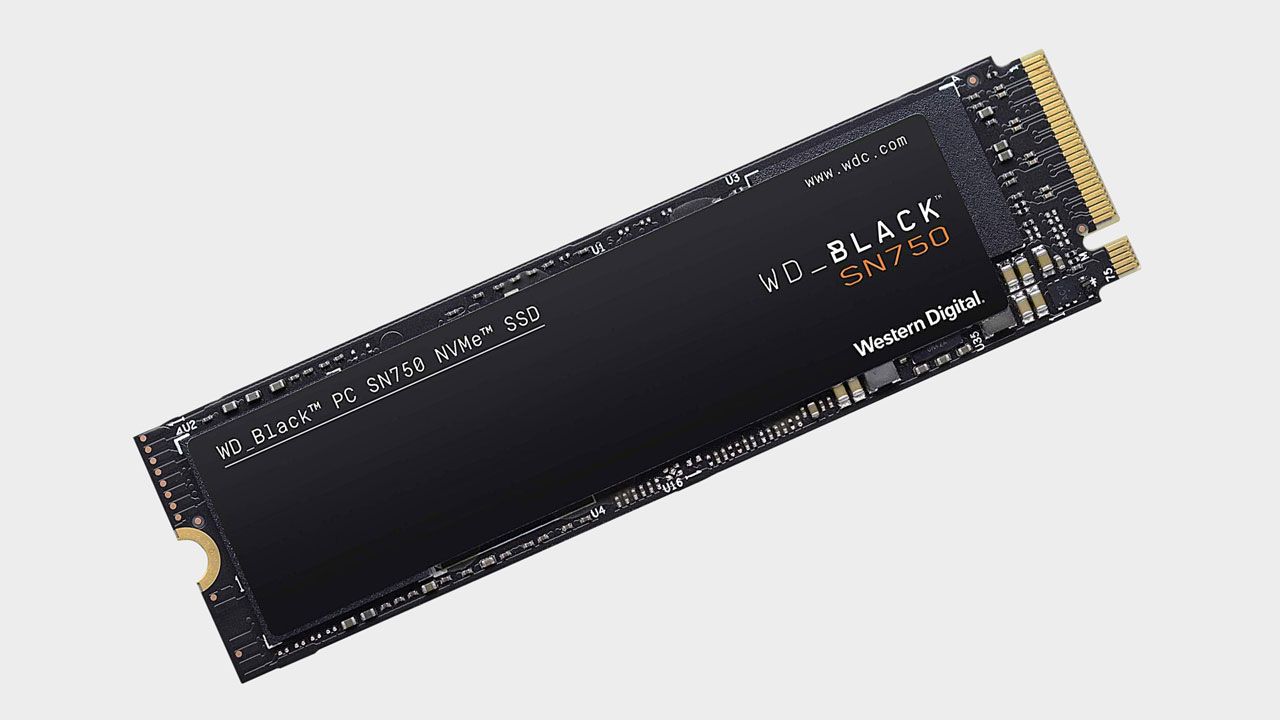
Our favorite WD Black SN750 config:
Western Digital has been a stalwart in the platter HDD world for many long years now. Its foray into the SSD market has shown an inherent competency in providing sensible, consumer-friendly storage. The new SN850 shows just how far that competency has extended into the latest generation of PCIe interface. Though it’s not without its faults, this M.2 form factor NVMe drive is a speed demon, made faster by a Gaming Mode you can toggle on or off in the company’s integrated SSD Dashboard software.
Of course, kicking it into overdrive also means cranking up the heat, which, according to Western Digital, necessitates the use of a thermal heatsink. Sold separately, the heatsink model comes at something of a premium, but the company claims its “passive cooling features” aid with ushering in “optimal levels of performance.”
In regular use, it’s practically as fast as the 970 Evo Plus. For the most intense workloads, Samsung wins out, but gamers aren’t likely to fall into that user category. Several other drives use the same SM2262EN controller, which often means similar performance (e.g., the Mushkin Pilot-E (opens in new tab)).
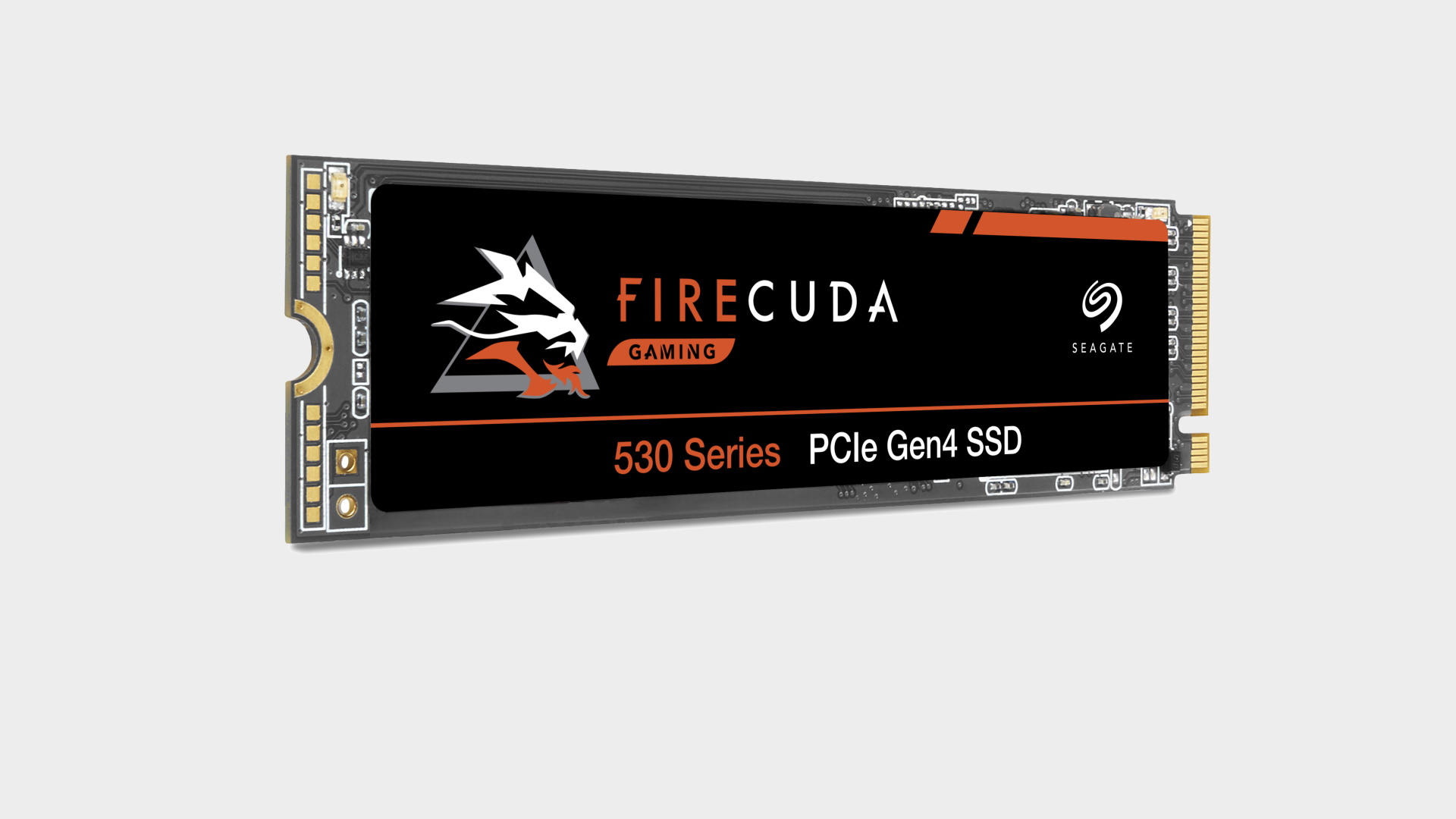
Our favorite Seagate Firecuda 530 config:
We’ve been waiting in anticipation for the release of Seagate’s FireCuda 530 series of PCIe 4.0 NVMe drives. And we can happily state that It’s definitely time to add Seagate to the list of manufacturers capable of making top tier SSDs. The Seagate FireCuda 530 is at least the equal of any SSD on the market.
The Seagate FireCuda 530 2TB is a 2280 (80mm length) M.2 drive. It combines brand-new Micron 176-Layer TLC NAND with a Phison PS5018-E18 controller. Micron claims that its 176L TLC NAND is the best in the industry with a 30% smaller die size and a 35% improvement in read and write latency over its previous generation 96L NAND.
The 2TB FireCuda 530’s rated sequential read and write speed is 7300/6900 MB/s, and that’s pushing the limits of a PCIe 4.0 x4 interface. For users looking at the other capacities, the 4TB drive has the same rating while the smaller 1TB and 500GB drives are rated for 7300/6000 MB/s and 7000/3000 MB/s respectively.
So, how does it perform? If Seagate hopes to sell a drive that costs more than the established SN850 and 980 Pro then it has to deliver, and it does. The latest Phison E18 drives typically excel at sequential read and write tasks, but tend to trail in random performance, and particularly random read tasks and IOPS, which is important for gaming performance.
Apart from the PCMark 10 storage tests, the FireCuda 530 either matches or beats the big bois of the storage world, and when you add its leading sequential performance and endurance rating, the Seagate 530 is at least the equal of any consumer SSD on the market.
We record temperatures throughout our testing making note of the peaks. The drive is left to run ‘naked’ with a Noctua fan over the area to keep things cool. The 2TB FireCuda 530 reached a peak of 71C, which makes it a pretty toasty drive, though we never saw any throttling during our extended testing. Though you will either want good airflow or an effective motherboard heatsink to keep things in check.
As a major player in the storage industry, I expect Seagate likely wrestled with the decision to hold back on releasing its best SSDs until it could include 176L NAND and steal the headlines. For me, the decision was absolutely worth it. Class leading sequential performance and a stunning endurance rating is joined by excellent random read and write performance.
All up this elevates the Seagate FireCuda 530 to the head of the pack. It will make a great C drive, it will hold a substantial game library or you could use it as a scratch disk for large data sets that need to be moved frequently. Feel free to thrash it with any kind of workload.
Read our full Seagate Firecuda 530 2TB review (opens in new tab).
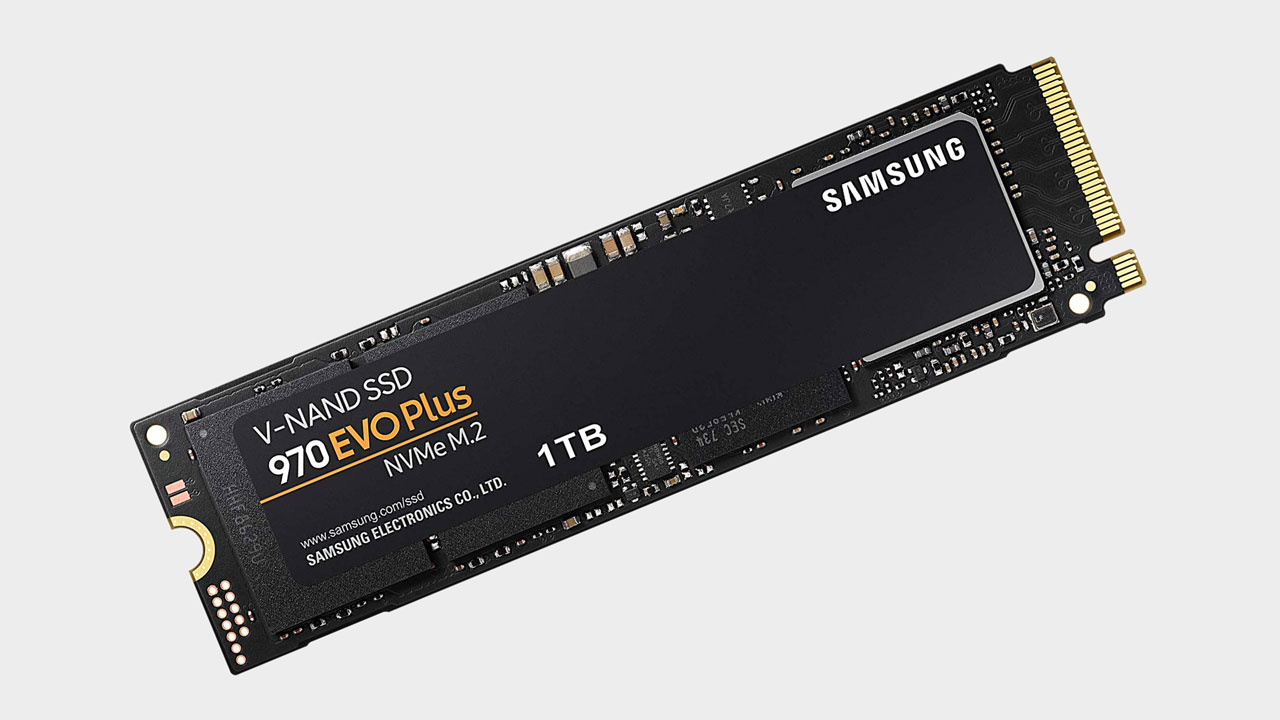
Our favourite Samsung 970 EVO Plus config:
There was a time it was hard to beat Samsung SSDs in the high-performance M.2 NVMe space, but with the shift towards PCIe 4.0 drives, we’ve seen the likes of Western Digital and Sabrent take the mantle forward. But PCIe 4.0 SSDs are still expensive, and back in the last generation, Samsung still has some fantastic drives. The Samsung 970 Evo Plus is still one of the fastest PCIe 3.0 M.2 drives around.
Like the 970 Pro, the more recent 970 Evo Plus rates well for endurance, which bodes well for its longevity; the 1TB model is rated for 600TB of writes over five years or a whopping 329GB of writes per day. You’d need to fill up and then wipe the drive every three days to manage that many writes, which isn’t a consumer or even prosumer workload. For reference, the SSD I’ve used the most still only has 40TB of writes after four years.
The 500GB and 2TB models are certainly worth looking at if you want a lower price or more capacity, respectively. But for most users, the 1TB drive strikes the sweet spot between performance, capacity, though Samsung’s drive is still pretty pricey.
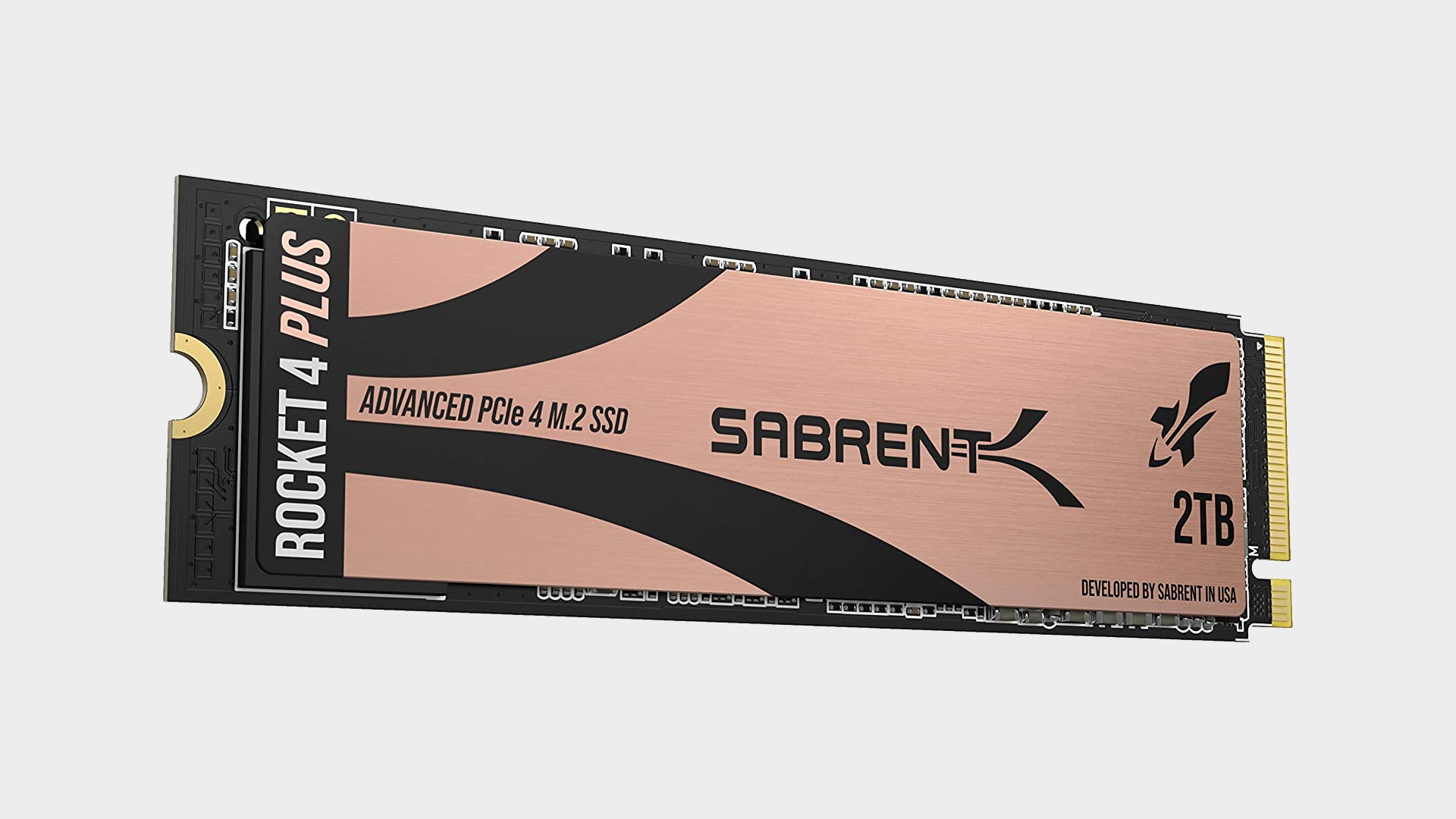
Our favorite Sabrent Rocket 4 Plus config:
The Sabrent Rocket 4 Plus is the first drive to use the new Phison E18 controller. This is the follow up to the immensely popular Phison E16 controller found in basically every first-gen PCIe 4.0 drive. No, seriously, that’s the controller you’ll find in everything from the Corsair MP600 to the Gigabyte Aorus to the Addlink S90 as well as plenty of Sabrent’s drives.
This new Phison E18 controller ups the ante significantly, offering sequential throughput of up to 7,100MB/s reads and 6,600MB/s writes. The theoretical limits of the interface are 8GB/s for both, so those figures aren’t far off how fast you can expect PCIe 4.0 to go. It’s incredibly fast basically, and on paper at least, the fastest drive to be released so far.
Sabrent’s latest drive impresses almost effortlessly, especially when it comes to the synthetic throughput. The sequential read and write figures in both benchmarks are impressive, but it’s the write performance that stands out most, leaving the competition eating dust. The Samsung 980 Pro in particular really struggles to keep up with the Sabrent Rocket 4 Plus.
As we’ve seen with previous drives, this synthetic throughput doesn’t always translate to the real world, and this is partly the case here. While the copying of 30GB of files (a Steam game install made up of lots of tiny files as well as a few chunky ones), comes in competitively at 2 minutes and 16 seconds (equating to 225MB/s).
The PCMark 10 storage tests are a bit more off the pace though, with both the Full and Quick benchmarks showing the Sabrent lagging behind the Samsung 980 Pro and the WD Black SN850. The Final Fantasy XIV: Shadowbringers benchmark loaded the levels in just over seven and a half seconds, which is notably quicker than the first generation drives, although behind the WD Black SN850.
This is still a fast drive, make no mistake, but the promise of those class-leading synthetic read and write speeds don’t quite translate to class-leading real-world performance. It’s not far off the pace, and your own usage cases may have this in the lead—especially if you need to write out a lot of large files—but for day-to-day gaming, it has to make do with fifth place.
Read our full Sabrent Rocket 4 Plus review (opens in new tab).
Best gaming keyboard (opens in new tab) | Best gaming mouse (opens in new tab) | Best SSD for gaming (opens in new tab)
Best VR headset (opens in new tab) | Best graphics cards (opens in new tab) | Best CPU for gaming (opens in new tab)
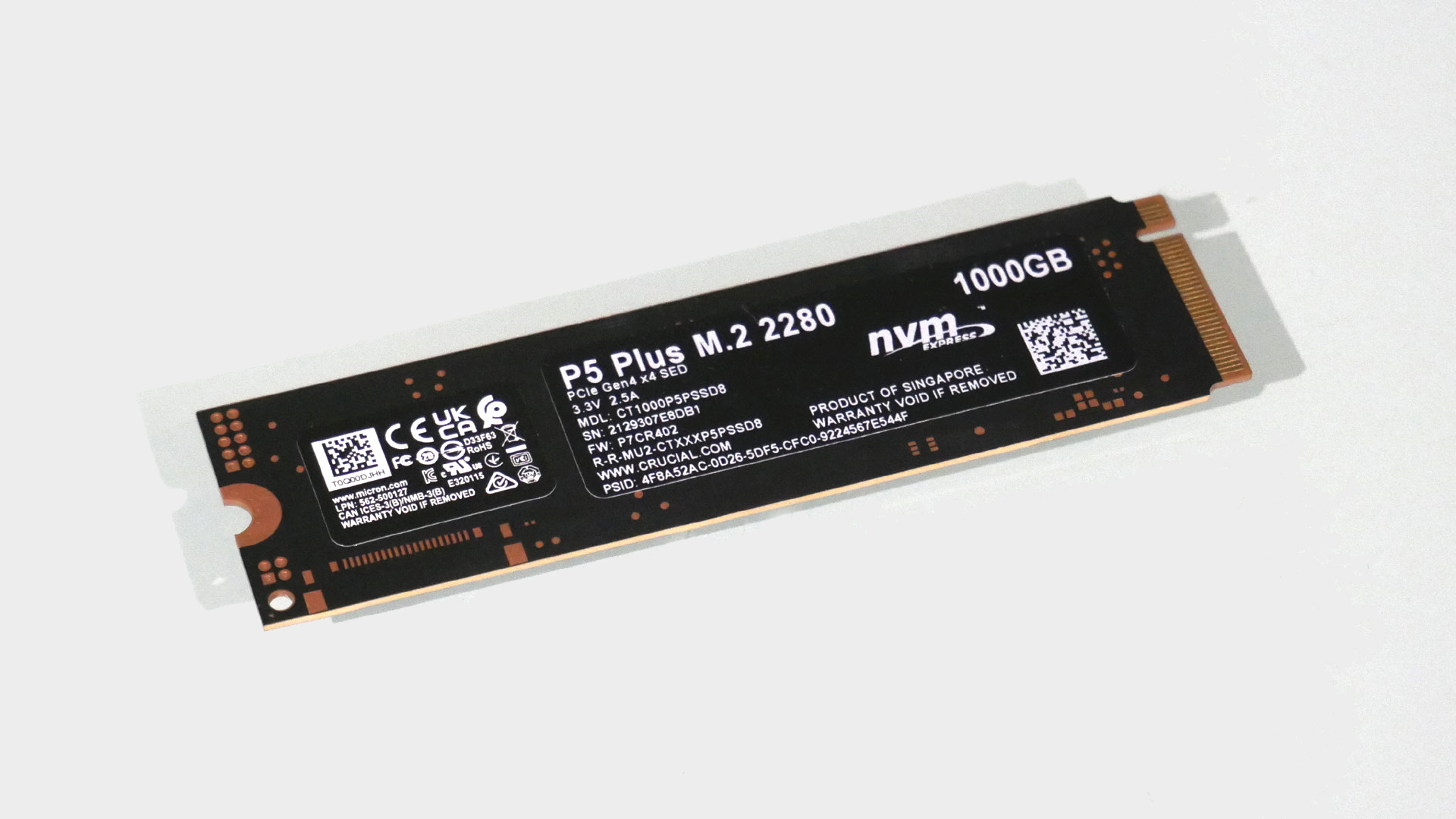
Our favorite Crucial P5 Plus config:
Cheaper alternatives
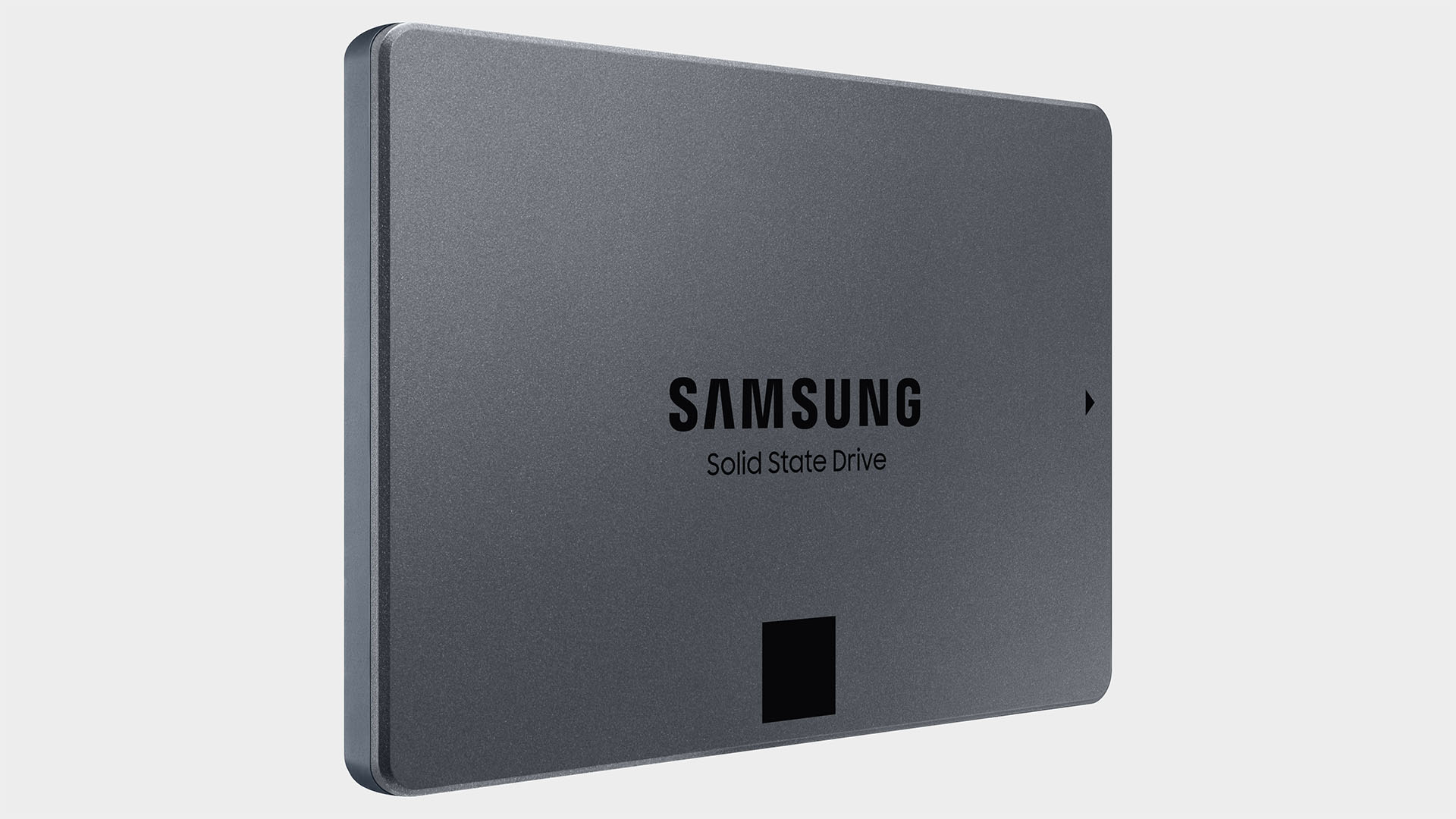
Though NVMe SSD pricing has dropped, high capacity SATA drives can be a great place to store your ever-growing Steam library. The best SSD for your gaming PC (opens in new tab) may still be an affordable, high-capacity SATA drive right now.
It’s over two years since the very first M.2 drives with PCIe Gen 4 interfaces appeared. But only now is Crucial rocking up with its own competitor with the Crucial P5 Plus. Of course, it’s also only relatively recently that Intel released a PCIe 4.0 capable desktop platform, namely Rocket Lake. Even now, the proportion of existing PCs with Gen 4 capability is small and plenty of new desktops are still being sold without support.
Consequently, the Crucial P5 Plus isn’t just the brand’s first PCIe Gen 4 drive. It also gets Micron’s latest TLC or triple-level-cell flash memory. The new 176-layer NAND chips are said to be a major upgrade over Micron’s familiar 96-layer flash. They’re claimed to offer lower latency, more throughput, and better endurance. In other words, better by pretty much every metric.
As for the minor matter of how this drive actually performs, it’s definitely good for the claimed peak sequentials, with writes absolutely dead on the 5,000MB/s figure in CrystalDiskMark and reads slightly higher at over 6,800MB/s. Slightly less invigorating are the short queue depth 4K random numbers. The QD1 reads are a mere 69MB/s and the writes come in at 174MB/s.
These aren’t catastrophic results. But by way of example, WD’s Black SN850 returns around 90MB/s and 315MB/s, respectively, and every other PCIe 4.0 drive we’ve tested is at least a little quicker.
Of course, synthetics like that only tell part of the story. In PC Mark, the Crucial P5 Plus nets 3,140 points in the Full Storage Index, which is one of the very best performances we’ve seen. On the other hand, the P5 Plus didn’t exactly excel in the Final Fantasy XIV: Shadowbringers (opens in new tab) level load test.
If there is a more substantial question mark, it concerns the related topics of long-term sustained performance and thermals. During our internal file copy test, we found performance dropped off after around 300GB of writes, which probably reflects the size of the dynamically allocated SLC cache. However, there was also a temporary blip after 200GB/s which may have been thermal throttling. In our testing, the P5 Plus hit 69°C, which is fairly toasty.
While it’s hardly an overheating basket case of an SSD, this drive obviously has no cooling to speak of. So, we wouldn’t be entirely confident about its thermal performance as the drive ages. It’s unlikely to get better with use, that’s for sure.
Overall, the Crucial P5 Plus is certainly attractively priced for a PCIe Gen 4 drive with quality TLC rather than cheap QLC flash memory, undercutting most if not all of the competition—and by a decent margin compared to the priciest drives like the WD Black. In that context, were we feeling particularly price-sensitive, we’d probably suck up our minor concerns over operating temps and IOPS performance.
Read our full Crucial P5 Plus review (opens in new tab).
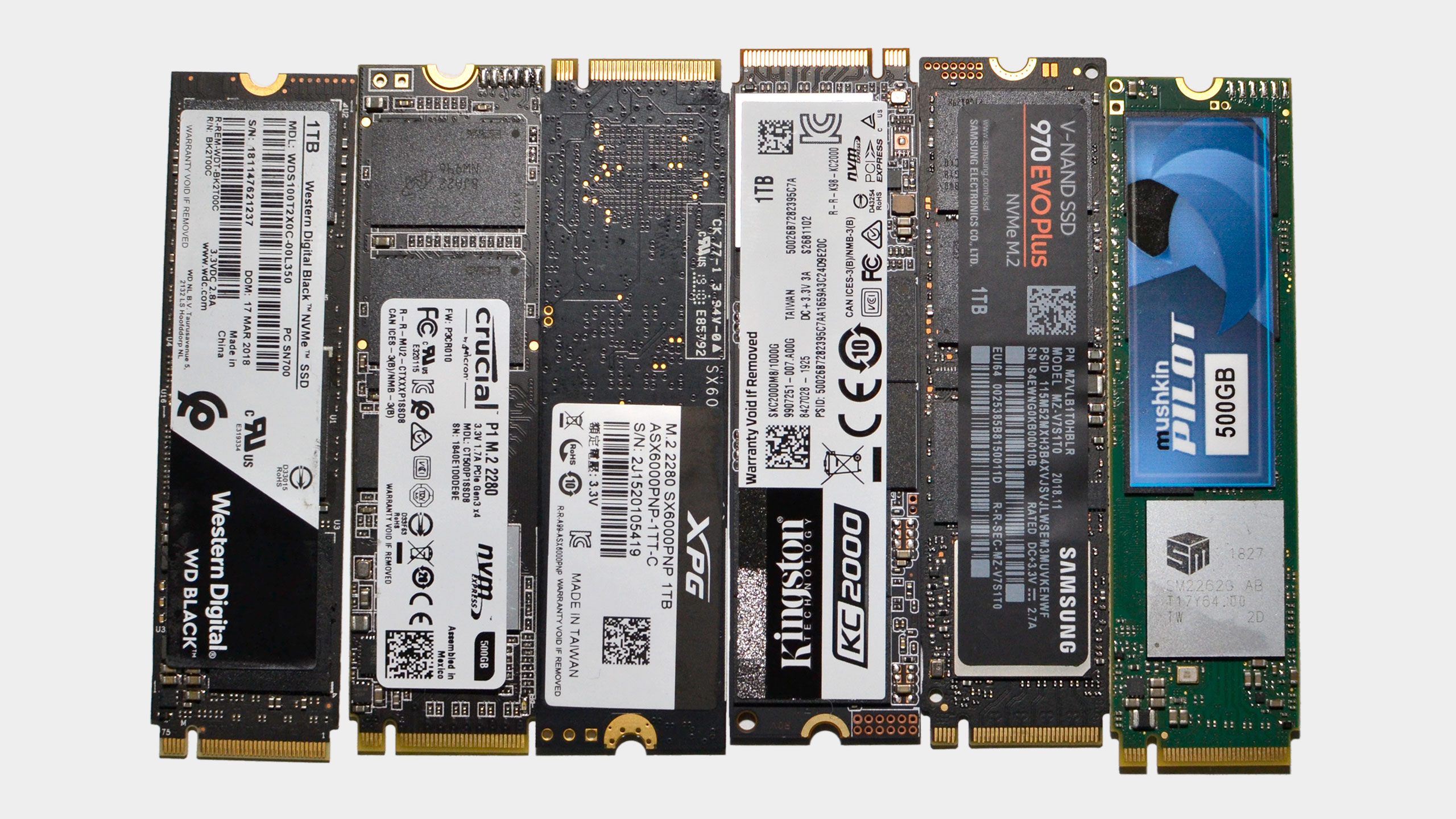
Best NVMe SSD FAQ
How do we test NVMe SSDs?
We put every SSD we get in the PC Gamer labs through their paces in various benchmarks made up of a mix of synthetic tests and real-world applications. To ascertain a drives sequential throughput, we use ATTO SSD Benchmark for compressible data (a best-case scenario) and AS SSD for incompressible data (more realistic). We also test random throughput with AS SSD and a combination of CrystalDiskMark 7.0 and Anvil Pro.
When it comes to the real-world tests, we time how long it takes to copy a 30GB game install across the drive and use PCMark10 and Final Fantasy XIV: Shadowbringers, which includes a level load test. We also check operating temperatures to ensure that the drive isn’t getting too hot and throttling.
Can I fit an NVMe SSD on my motherboard?
The M.2 socket has been included on motherboards of all kinds for many years now, so the chances are that there’s a spare slot sitting inside your existing gaming PC. Check out your motherboard’s specs page online before pulling the trigger on an NVMe SSD purchase, though, to be sure. Those harboring a board that’s a few years old now, do yourself a favor and make sure it supports booting from an NVMe drive first. Not all older motherboards do, especially if you’re going back multiple CPU generations (maybe a full upgrade’s due, if so).
What is NVMe, exactly?
The NVMe, or Non-Volatile Memory Express interface, has been designed specifically with solid state drives in mind. In contrast, SATA, the previous interface in charge, was built to cater to most HDDs. The thought is, at the time, that no storage would ever need to exceed its lofty max bandwidth. To the surprise of a few, new storage mediums such as solid state absolutely blaze past SATA’s max bandwidth, and so a new protocol in NVMe was born.
That makes NVMe SSDs the perfect storage tech for gaming.
Running on the same basic interface as your graphics card, NVMe SSDs deliver more raw bandwidth and performance than any SATA-based SSD could ever offer. They’re also a lot smaller than any other hard drive or SSD too, which all means that the best NVMe SSDs are perfect for either that small form factor build you always wanted or a monstrous high-end gaming PC build (opens in new tab).
What’s so special about NVMe?
The old storage paradigm was built on the idea of spinning disks. When SSDs hit the mainstream consumer market back in 2007, they reset our expectations for storage. Moving from the mechanical world of hard drives to the silicon world of SSDs brought rapid improvements in performance, technology, capacities, and reliability. SSDs quickly saturated the various SATA connections, and so faster alternatives were needed, but the interface was only part of the problem.
The AHCI (Advanced Host Controller Interface) command protocol was designed for much slower media (i.e., spinning magnetic disks). AHCI is inefficient with modern SSDs, so a new standard was developed: NVMHCI (Non-Volatile Memory Host Controller Interface). Combine NVMHCI with a fast PCIe interface, and you have NVMe, Non-Volatile Memory Express. It’s a much-improved interface developed around the needs of flash memory rather than spinning disks.
What’s NVMe performance like in the real world?
If you’re copying a game from one drive to another or validating game files in Steam, faster NVMe drives make a difference. They can also shave off a second or two when it comes time to load a game level, but the more significant difference is against hard drives, where even a slower SATA SSD is much faster. Go beyond a certain point, and all SSDs start to feel similar.
In other words, while the speed freak in me loves what NVMe brings to the table, I recognize that in practice, it’s usually not that noticeable. If you’re looking to get the most from your money when it comes time to build a gaming PC, good SATA SSDs (opens in new tab) remain an excellent option, with prices now falling below 10 cents per GB.
NVMe drives are becoming increasingly commonplace, and prices continue to drop. In the past year, I’ve tested far more NVMe drives than SATA drives, mainly because SATA drives are all starting to look the same. Most hit the same ~550MB/s limit of the SATA interface for sequential IO, though random IO can still be a bit problematic on some models. With budget NVMe prices now matching SATA drives, most new builds should seriously consider whether the extra power and data cables of SATA are necessary.
[ad_2]
www.pcgamer.com
